Cyberattacks are growing exponentially, and it is estimated that ransomware on a global scale could reach damage costs up to $20 billion. It is therefore important to monitor pages for potential intrusions including malware and malicious link injections on your websites.
The malicious URL automation provides one-click access to page scanning and it can be applied on a single URL or an entire website. This can help to strengthen the cybersecurity of your business and it can also be ideal for sales prospecting. For example, marketing agencies can use this automation to run checks on potential prospects and provide a value-added icebreaker when issues are found.
The Malicious URL checker can be used both on an entire website check or as part of an existing workflow. You can run the automation on-demand or on a schedule.
How to check pages at scale for malware using Hexomatic
In this short tutorial, we will cover how to check a list of URLs for potential malware.
Step 1: Create a new workflow
From your dashboard, create a new workflow by choosing the “blank” option. Then, select Data automation as a starting point.
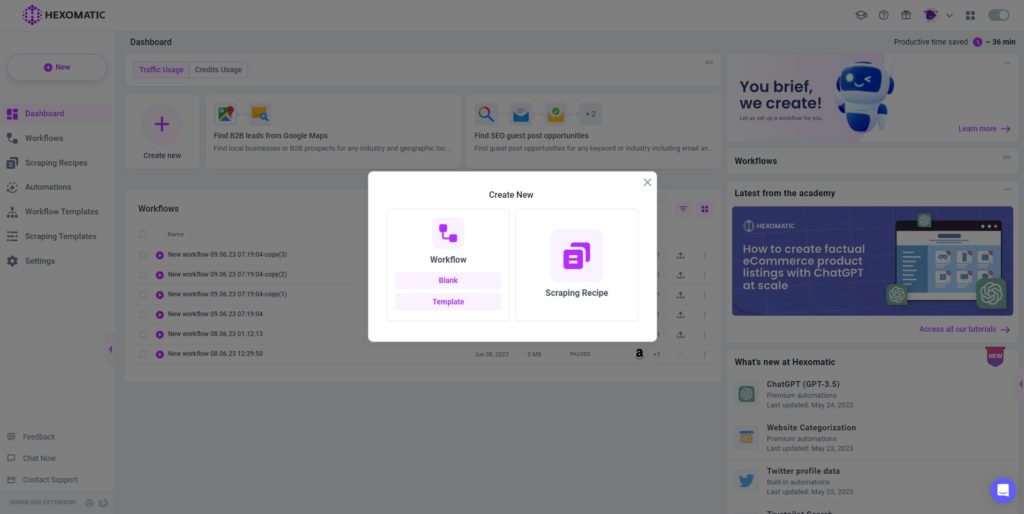
Step 2: Provide a list of URLs
There are two ways you can proceed. You can upload a CSV file containing a list of URLs or you can choose the manual paste option selecting the format as list of inputs. Then, enter each URL as a new line.
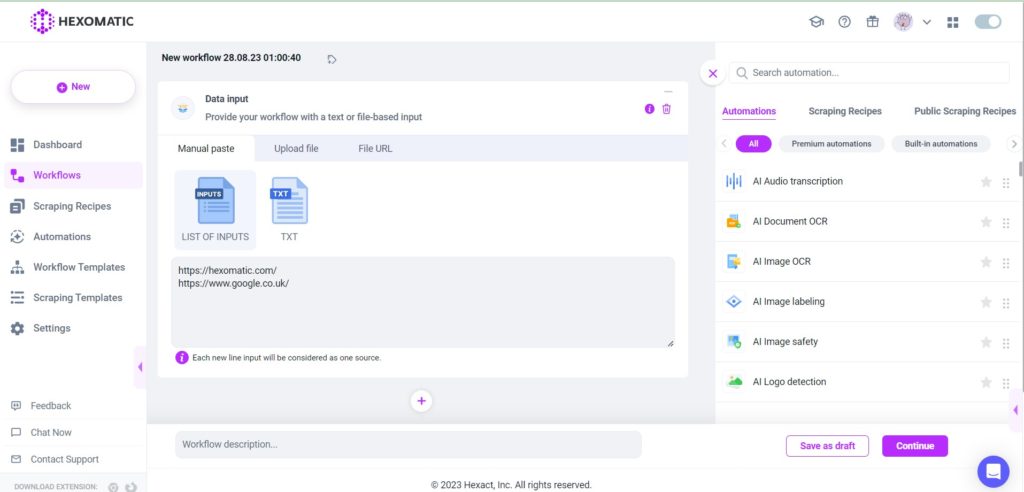
Step 3: Add the Malicious URL checker automation
From the list of automations, select Malicious URL checker and select the data input as a source of the automation. Then click Continue.
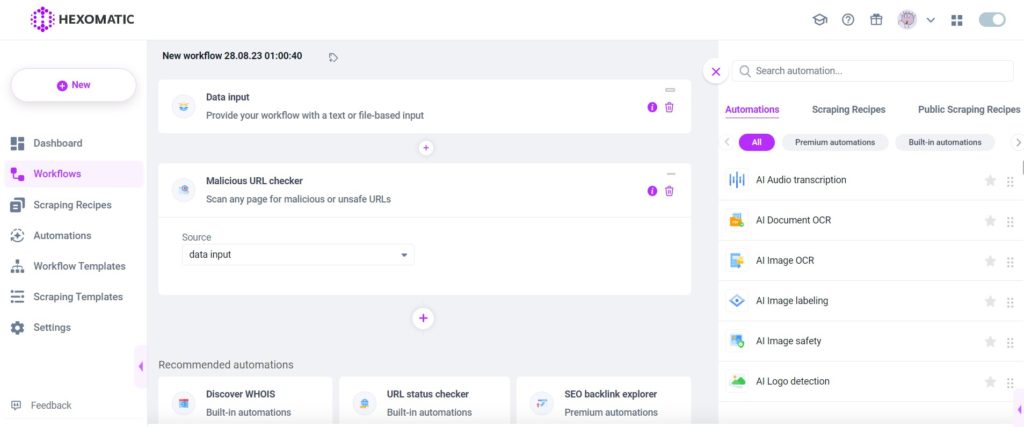
Step 4: Run or schedule your workflow
Next, you can run the workflow or run it on a schedule.
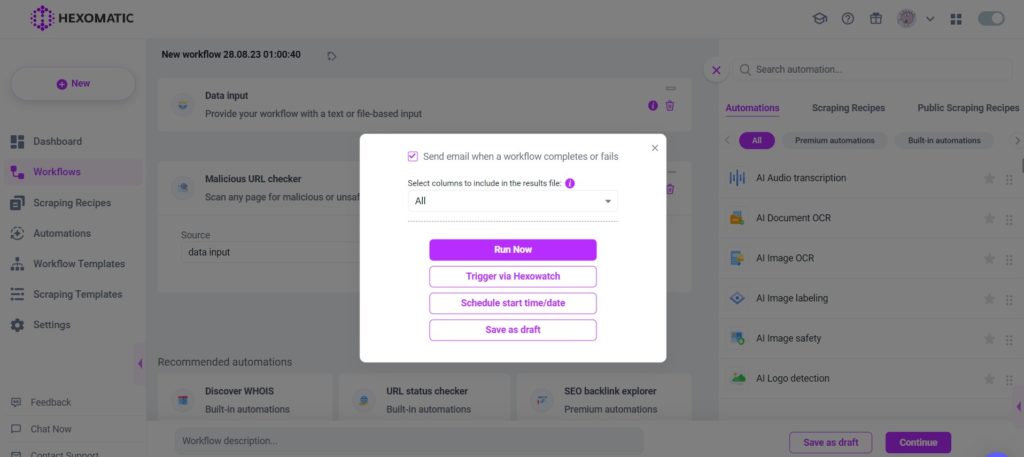
Once your workflow has finished running, you can then review your data in the Results Preview and export it in CSV or Google Sheets.
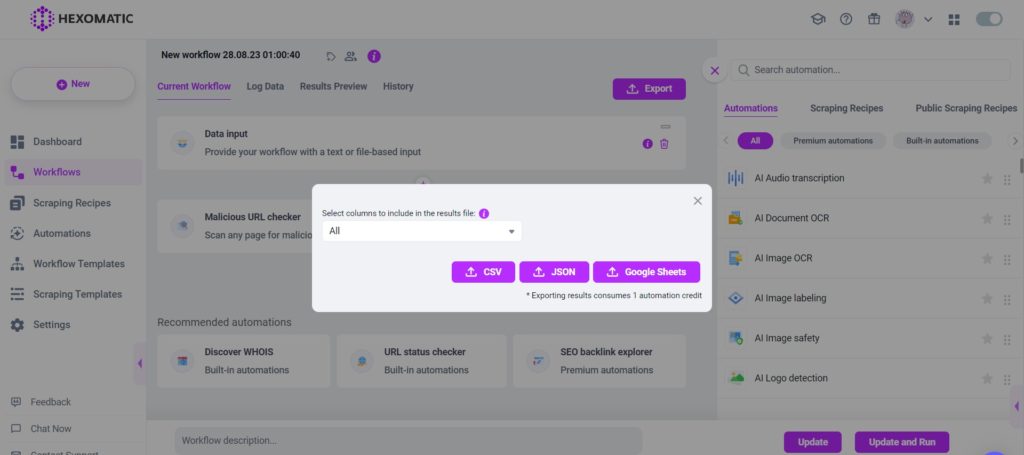
Automate & scale time-consuming tasks like never before

Marketing Specialist | Content Writer
Experienced in SaaS content writing, helps customers to automate time-consuming tasks and solve complex scraping cases with step-by-step tutorials and in depth-articles.
Follow me on Linkedin for more SaaS content
